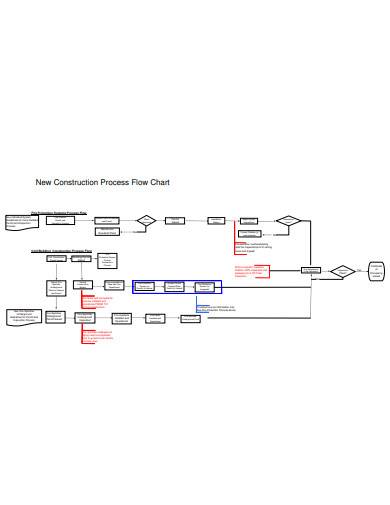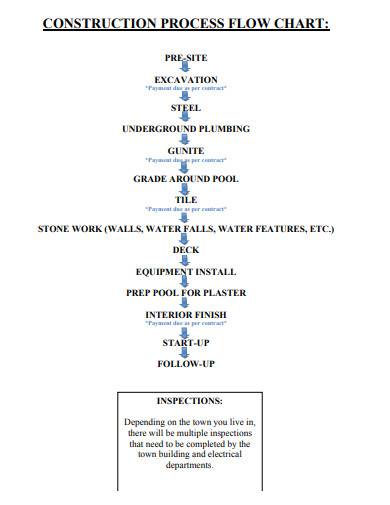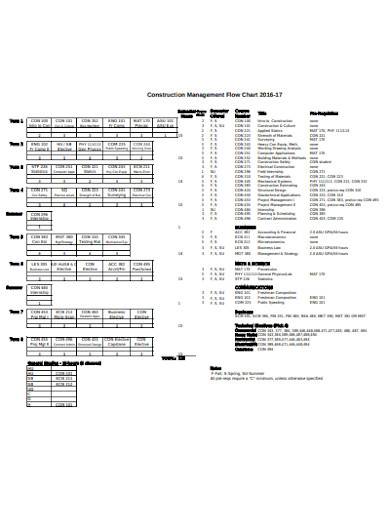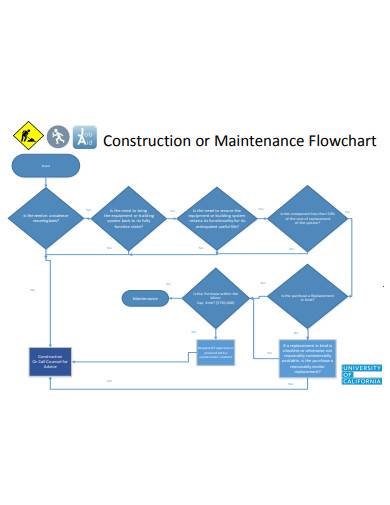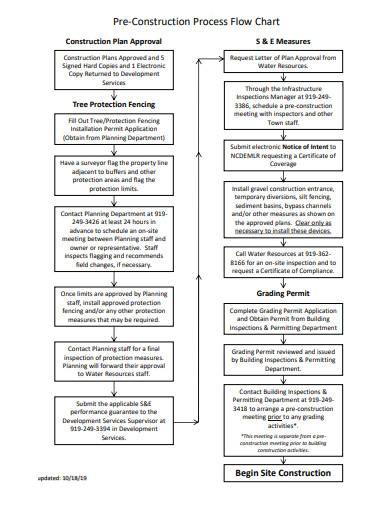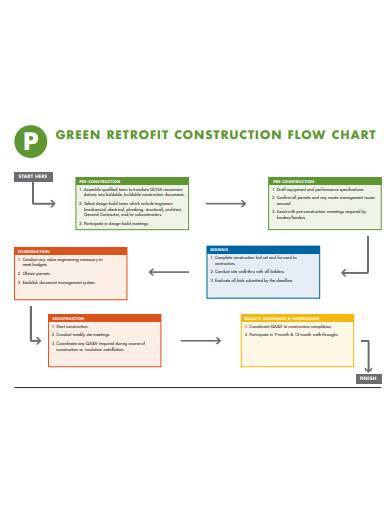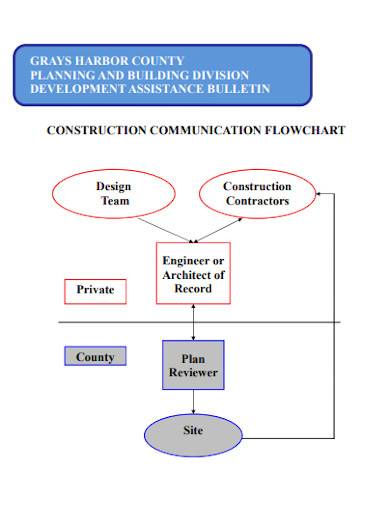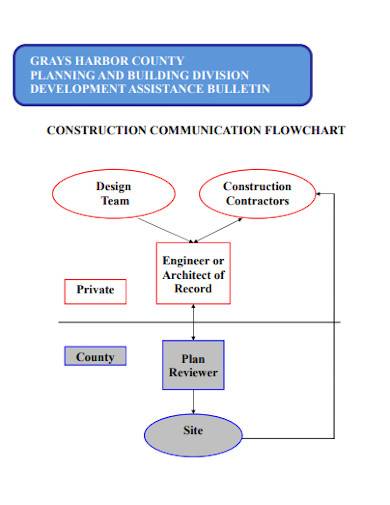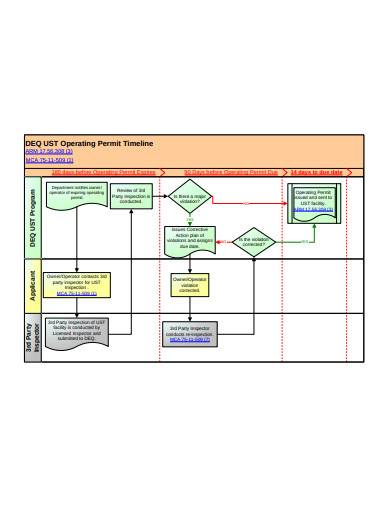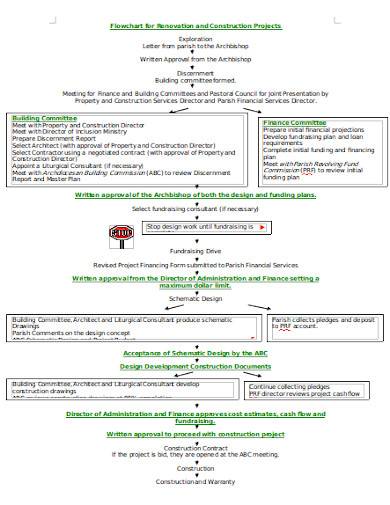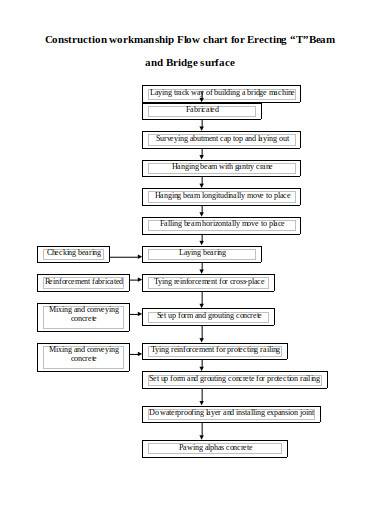Take time to stand in front of a construction site; see all the cement mixers turning, the jackhammers drilling, even blow torches welding. Take all that in, and you’ll realize that you’re staring at one of the most dangerous places on the planet. If you’ve seen “Final Destination,” you know how easily these people put themselves in life-threatening situations. Hence, proper risk management is crucial in keeping operations afloat and workers safe—and in the stressful pace of it all, a work flowchart is your best solution.
Construction Flowchart Template
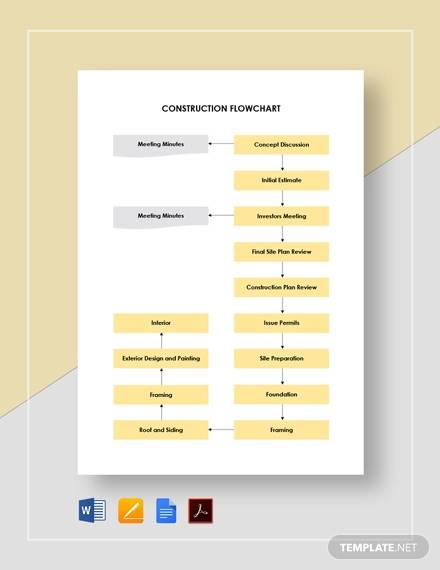
Commercial Construction Flowchart Template
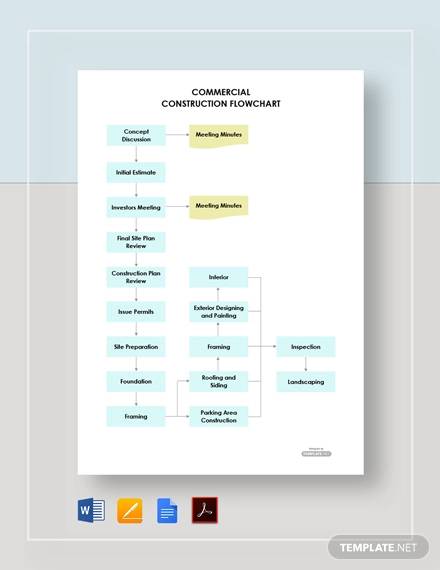
Free Sample Construction Flowchart Template
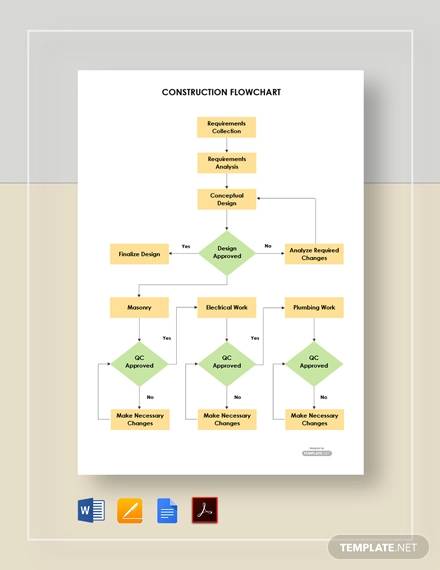
Free Simple Construction Flowchart Template
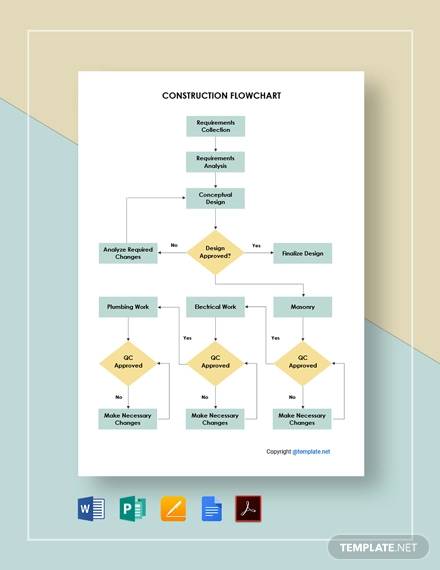
What is a Construction Flowchart?
“What is a flowchart?” People who are unfamiliar with this document often ask this question, and then start comparing it to a checklist or a diagram; however that’s only half-right. A construction flowchart is designed to be a reference your workers have during a rush of busyness and stress. It does so by providing a physical representation of the workflow on-site. As such, in creating your flowchart, make sure that you understand the usual routine of your crew to better craft the model for them.
This, however, is not a 100% full-proof plan as the actual project management falls onto your hands. In fact, to an extent, this document has a pretty niche use. Despite being unusual, the flowchart’s function is essential for situations when everyone is running on instinct and can’t think straight as this document’s simplistic design specializes in hurried-crowd control.
By Ebb and Flow
You know how stressful it is when a project is close to the deadline, and you’re still multiple phases behind. This type of stress induces panic, ruins quality, and it gives you that heavy feeling of dread as the back of your mind tells you that you’re not going to make it. Unfortunately, this physical, mental, and emotional burden isn’t a “just you” factor; it’s all too real. In fact, even some of the most successful business people need to find a way to handle stress. As useful as leisurely activities are at releasing stress post-work, what if you knew about a technique to aid with keeping your crew’s head in the game during all the commotion?
A solution you can incorporate into your working schedule is a construction flowchart. Specially designed for this purpose, here’s why a diagram is your most viable option; it’s simplistic design. The first thing you’ll notice is that the entire outline is a composition of just brackets and lines. An uncomplicated layout makes it so much more readable in the heat of stress as people zip past each other. However, even though the outline consists of mostly basic figures and a bit of text doesn’t mean it’s a breeze to draft. More often than not, people overdo it with the stylistics and lose the essence of the flowchart’s purpose; to provide valuable information at a critical time.
Construction Flow Chart Samples
An advantage in writing this document is its simple layout and general design; this template was “bred” to be understood onsight. However, having a few sample templates to give you an edge doesn’t hurt you much.
1. Construction Process Flow Chart Sample
2. Construction Flow Chart
3. Construction Management Flow Chart
4. Construction or Maintenance Flowchart
5. Pre-Construction Process Flow Chart
6. Green Retrofit Construction Flow Chart
7. Construction Communication Flowchart
8. Post Construction Flow Chart
9. Construction Permit Timeline Flow Chart
10. Flowchart for Renovation and Construction Projects Sample
11. Construction workmanship Flow chart Sample.
How to Create a Construction Flowchart?
Creating a construction flowchart seems simple in concept, yet surprisingly meticulous. Though this document lacks up-front complexity, its tedious process and somewhat restricting nature become a challenging hurdle for people of creative prowess. As such, these tips and tricks can help you make a quality construction flowchart.
1. Evaluate Your Process
This doesn’t mean that you need to create a data analysis, but it does require you to have a firm understanding of the procedures you wish to portray on your construction flowchart. Your goal, after all, is to assist your crew. Hence, you inform them of the necessary steps in the middle of stressful situations. Furthermore, during these instances, where you have no time to check the accuracy of the information, providing the correct procedure is essential to getting everything right.
2. Keep It Concise Yet Informative
Concise writing is effective as a marketing tool since it catches the eyes of customers—the same can be applied for construction flowchart. If your goal is for your workers to comprehend your work flowchart immediately, then you don’t want to fill an entire box with a wall of text. You want to keep your text few, and your font size large to improve comprehensibility despite the rush people work at.
3. Utilize A Legend
Now you might be thinking, “What kind of legend could I use?” Well, for starters, your text containers may vary in different shapes and sizes, such as round-ended rectangles, ovals, and point-ended squares. You can use unique bracket shapes and sizes to display information of varying importance; critical information or text that must be immediately read should be placed in larger forms, while finer details or information that further explains the main point can be found in smaller boxes. To add to more depth into this concept, you can even use colors and forms as indicators of information relevance.
4. Maintain Simplicity
As simple as this step sounds, pun intended, many people step into the pitfall known as “getting hooked by add ons.” What this means is that there are instances where the design is so frivolous that the text becomes hard to read. Other times, it’s due to excessive use of color pallets. Construction flowcharts require a basic design to be effective as the reader’s ability to understand the text in possibly a split second in such an explosive environment. A little creativity doesn’t hurt, but when it gets in the way of the document’s purpose, that is when it crosses a line.
With the hectic nature of the job, the hazardous situations workers voluntarily place themselves in, and the funding required to fuel a construction plan, it’s no wonder why a small mistake could cost you millions of dollars. Hence, providing your crew members with a useful work flowchart gives them a reference and guide they can bat an eye out to once in a while to get the job done efficiently. After all, isn’t a project considerably more straightforward if you give them instructions?
Related Posts
Employment Certificate
Teacher Lesson Plan
Deed of Assignment
Contract Termination Letter
Student Research Proposal
Diet Plan
Housekeeping Resume
Marriage Proposal Letter
Nursing Resume
Fund Transfer Letter
Purchase Order Cancellation Letter
Certificate of Service
Employee Leave Form
Visitors Log
Requisition Form

